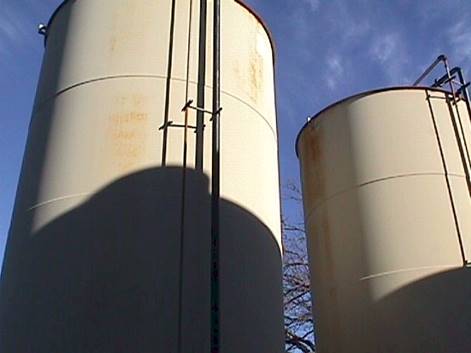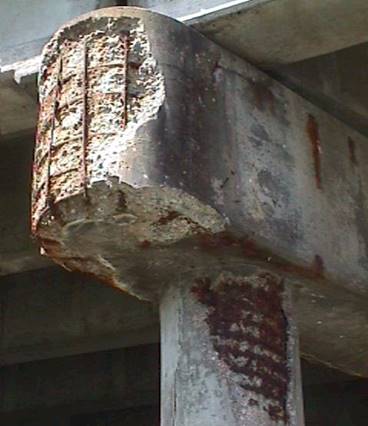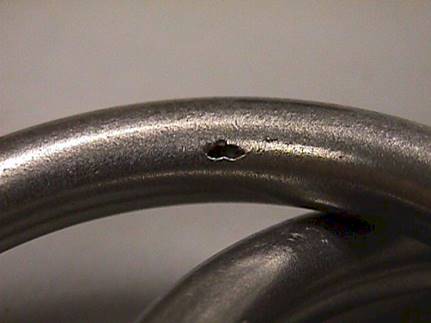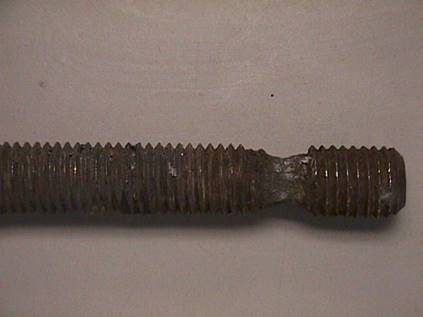INTRODUCTION
The aim of this introduction is to provide some of the vocabulary of corrosion along with a few examples of different corrosion forms that are commonly encountered. The scale of corrosion and how it affects everyday processes such as industrial production, maintenance, transportation, safety, and other issues with costs associated will be introduced.
Corrosion can be defined as “degradation of a material due to environmental exposure”. This is a very wide definition, which includes wood rotting and many other areas beyond the scope of these notes. A much narrower definition will be employed here. For the purposes of this book the definition of corrosion is “degradation of engineering materials by exposure to a wet environment”. This definition includes corrosion of metallic materials by a wide range of processes as well as degradation of plastic materials, for example carbon fiber based composites, and steel reinforced concrete.
In many cases corrosion is obvious. An example would be rust on steel. The picture below shows oil storage tanks where the paint is not fully protecting the underlying steel from corrosion. Rust can be seen on both tanks starting to show through. Unless some maintenance is conducted on these tanks they will continue to corrode.

Another world wide examples of corrosion is degradation of bridges. In this case the concrete surrounding steel reinforcement has “spalled”, leaving the steel reinforcement or “rebars” exposed. The structural strength of the pilings is being compromised.

These examples are very clear and simply observed and corrected. However, corrosion does not necessarily involve such clear visual changes or material loss. A bright, shiny high strength steel can break at a stress level much below that predicted and the process responsible for failure can be a corrosion process. In this case it could be stress corrosion cracking or more likely hydrogen embrittlement. Therefore one important aspect of corrosion is that is does not always produce a visual change such as rust on steels. Indeed the most dangerous forms of corrosion are those which cannot be easily detected. These would be “pitting corrosion” from the inside of a tank to the outside or “crevice corrosion” under bolt heads or in threads.
An example of “pitting corrosion” is shown below and on the cover. In this type of corrosion, which is termed “localized” as it does not spread laterally over surface, a pit or hole forms in a metal locally while the remainder of the surface shows no evidence of corrosion. This form of corrosion of often very difficult to detect, for example if it starts on the inside of a tank due to the combination of material and environment.

A pit in a stainless steel ring.
“Crevice corrosion” is another example of a localized form of corrosion. The example in the figure below is a stainless steel bolt that was used to hold the keel of a boat in place. The area

Crevice corrosion shown above is usually hidden.
of crevice corrosion is in the threaded region where the nut was in contact down in the bilge area.
Other forms of corrosion reduce the stress bearing capability of the material, such as stress corrosion cracking, corrosion fatigue, fretting fatigue and hydrogen embrittlement. In these cases the material will fail at stress levels below those expected. In addition, if these forms of corrosion are not detected, “catastrophic failure” can occur, in that there is no warning before a devastating failure takes place.
For non-metals, degradation can take the form of blisters on the surface and removal of polymer in carbon fiber based composite materials. In this case the reactions responsible are within the composite and do not necessarily directly lead to damage. It is a secondary process that produces damage such as a reaction between corrosion reaction products to form an osmotic pressure buildup in the polymer at the carbon fiber to polymer matrix interface.
For steel reinforced concrete, it is often corrosion of the steel reinforcing bars in the structure which causes problems. The volume of the iron oxides resulting from corrosion are several times that of the iron which was dissolved to form it. This large volume expansion imposes a tensile stress in the concrete at the concrete to rebar interface. Concrete will crack and rust “bleed” form this crack. Eventually, that damage will propagate and become sever enough to “spall” concrete from the rebar. Many examples of this process exist on the bridges and highways throughout the world.
Prevention and reduction measures for corrosion are available. An article from the Times newspaper on June 22, 1815. The main news in the paper was the dispatches from the Duke of Wellington to George III on the battle of Waterloo several days earlier on June 17. A vivid description of the battle against Napoleon and his forces was provided along with a casualty list of officers. Tucked in a corner was an article on anti-corrosive paints. It describes the advantages of the paint system, the cost, colors and amounts. Today industry is still advancing with the task of producing improved anti-corrosive paints. Other measures are widely used today, for example galvanized steel sheet, or sacrificial anodes where a metal corrodes instead of the all important component or structure, and impressed current cathodic protection where an electric current is applied for corrosion protection. These processes will be described later in the course.
The aim of this introduction is to generally describe the process of corrosion. Many estimates of the cost to corrosion were made. These include 5% of the US gross national product and other numbers too large to understand. Other methods involve the cost of a system can be associated with 33% going to maintenance. A more rational feel for corrosion is provided by the time a student has to spend repairing the rust on cars or watching rust take over the car. Corrosion is expensive and stopping or retarding also costs money. However stopping corrosion is a worthwhile exercise if it keeps industry operating.
The remainder of this book outlines in more detail the types of corrosion shown above, along with testing methods and methods to protect and reduce the effects of corrosion.
Source: http://www.che.uri.edu/course/CHE534w/CHAP1.doc
Web site to visit: http://www.che.uri.edu/
Author of the text: indicated on the source document of the above text
If you are the author of the text above and you not agree to share your knowledge for teaching, research, scholarship (for fair use as indicated in the United States copyrigh low) please send us an e-mail and we will remove your text quickly. Fair use is a limitation and exception to the exclusive right granted by copyright law to the author of a creative work. In United States copyright law, fair use is a doctrine that permits limited use of copyrighted material without acquiring permission from the rights holders. Examples of fair use include commentary, search engines, criticism, news reporting, research, teaching, library archiving and scholarship. It provides for the legal, unlicensed citation or incorporation of copyrighted material in another author's work under a four-factor balancing test. (source: http://en.wikipedia.org/wiki/Fair_use)
The information of medicine and health contained in the site are of a general nature and purpose which is purely informative and for this reason may not replace in any case, the council of a doctor or a qualified entity legally to the profession.
The texts are the property of their respective authors and we thank them for giving us the opportunity to share for free to students, teachers and users of the Web their texts will used only for illustrative educational and scientific purposes only.
All the information in our site are given for nonprofit educational purposes